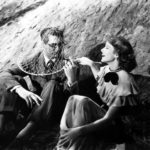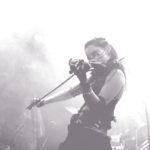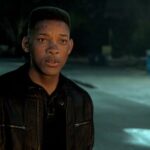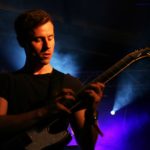Automatism: Defining and Realising Modes of Automatic Art – An Essay on Art Film
Automatism – Defining and Realising Modes of Automatic Art.
“au-tom-a-tism (aw-tómmə-tiz’m) n.1. a. The state or quality of being automatic. b. Automatic mechanical action. 2.Philosophy. The theory that all living organisms are automatons. 3.Physiology.a. The automatic operation of organs and cells, such as the beating of the heart. b. Performance of an act without conscious control, as in the operation of the reflexes. 4. The effort at suspension of consciousness made by certain surrealist writers and artists in order to express subconscious ideas and feelings. [French automatisme : automate, AUTOMATON +-isme, -ISM.] –au-tom-a-tistn.”
“au-to-mat-ic (áwtə-máttik) adj. Abbr.auto. 1. a. Acting or operating in a manner essentially independent of external influence or control; self-moving. b. Self-regulating. 2. Lacking volition, intention, or conscious planning; involuntary; reflex. 3. Occurring as a matter of course or routine: automatic weekly inspections.4. Having automatic transmission. Said of a motor vehicle. 5. Capable of firing continuously until ammunition is exhausted. Said of firearms. Compare semiautomatic. –See Synonyms at spontaneous.”1
Given these definitions, there are only some that apply and only a few that are possible to realise practically. Automatism has been used by the surrealists for the purposes of displaying the subconscious as it is a means of performing without conscious influence. In fact André Breton defines Surrealism as “Pure psychic automatism”2 There is a great deal of debate whether this is indeed possible. In the past automatic writing and automatic drawings were the main outlets for practicing automatism, the idea being that one clears their mind and begins to write or draw whatever comes to their minds.3 The criticism of whether automatism is possible can be displayed by asking whether it is actually automatic to paint an image that has come straight to mind giving the thought that has to go into painting or drawing it.”I myself believe one cannot subscribe to it (‘pure psychic automatism’) without calling into question the part inspiration plays in all the other arts particularly painting.”4 Here, Jacques Brunius emphasises the problems with being purely automatic and especially draws upon painting – a common outlet for automatism. But the idea of how automatism works, is that once the first thing has been realised on paper/canvas the artist/writer shall proceed to the next completely unrelated idea.
Assuming that automatism is possible to realise by these means, is it possible for the ‘pure-psychic automatism’ to be applied to other art forms like film? Given that film is a collaborative process the concept of ‘too many hands spoil the broth’ could be used when talking about automatism and its possibilities in film. However, is it true to say that automatism has to be an individualistic thing? And that when one acts automatically with another it ceases to be automatic? The surrealists developed games to demonstrate the possibilities of automatism and show how it could be done. These included the question and answer game and the exquisite corpse.5 The first being when one person thinks of a question and the other an answer completely independently of one another and the answer is given before the question. The second being when a person automatically thinks of a word and writes it down, folds it for no one to see then gives it to the next person who does the same. At the end when there is no more space left to write on the passage is said to represent automatism and the depiction of the pure unrestrained subconscious. The first time this was attempted the passage reportedly read “Le cadavre exquis boira le vin nouveau.” (“The exquisite corpse will drink the new wine.”6 And so the name gained its title. These are both means with which to display automatism and are both collaborative process of people thinking/acting automatically. So is it really impossible to make a film automatically?
Well it is important to mention that it has been attempted, if not by films such as Un Chien Andalou (d. Luis Bunuel France 1929) which reportedly had Salvador Dalí and Luis Bunuel throwing ideas at each other dismissing those with meaning and accepting those without – almost acting automatically of each other.7 Then there has been Anijam (d. Marv Newland Canada 1984) that reportedly involved animators acting completely independantly of each other and creating sequences only based on the last still from the previous sequence.8 Working in a similar way there is also Exquisite Corpse 8mm Film Experiment (d. Nicolás Alcalá and many others France and USA 2011) which involves many filmmakers making their own segments completely independently of one another to then be edited together for the final film.9 These films are probably the closest that film can get to realising automatism through film, considering that they are collaborative processes that include completely automatic sequences. But the films aren’t completely automatic, it can be said that merely the narratives of the films – the connection of sequences, are automatic. Anijam being closer still to pure psychic automatism for its use of automatic location; mise-en-scene; costume; props and possibly cinematography.
However I wish to propose a means for a live action film that is completely automatic. I wish to place the cast and crew under conditions that will induce an automatic state of mind. André Masson the surrealist painter is well known for his experiments with automatism and liked to keep himself at reduced states of mind to better induce states of mind capable of creating automatic works. He liked to keep himself intoxicated, drug induced and sleep deprived.10 It is through a similar technique that I wish to induce such an environment for the cast and crew, some medication can leave people dazed and confused and if the cast and crew volunteer and the medication is safe to use to induce these states I would like to use this method. However the easiest and the simplest method is to have the cast and crew remain awake for at least 36 hours, this is said to be a time where the body shall be reduced to a state of mind that will induce automatic behaviour. Prior to filming I also wish to engage the cast and crew in many acts of automatism almost as practice before filming and so we shall engage in automatic writing; automatic drawing; exquisite corpses and other activities like Bulletism (throwing ink at a piece of paper and inducing an image from it); calligramme (writing poetry in shapes); coulage (putting a liquid form of metal or chocolate or something into water and seeing the random sculpture it forms); cubomania (cutting an image into squares then randomly rearranging them); dream résumé’s (constructing an employment résumé talking about achievements within dreams); eclaboussure (where oil paints or watercolours are laid down and water or turpentine is splattered, then soaked up to reveal random splatters or dots); moving a liquid down a vertical surface.11 I believe that this along with the lack of sleep shall allow for a atmosphere and state of mind perfect for film automatism and what shall that be you ask? Well…
Let’s take all the aspects of film: Directing; Writing; Music; Cinematography; Editing; Art Directing; Special Effects; Costume; Props; set and lighting. What I prepose for a take on a live-action film automatism is that there will be no director and no script. The characters will be improvised taken from a state of sub-consciousness as to be completely automatic and independent from each other. Dialogue shall be done in the same way that automatic writing is done, it shall just be improvised and spoken from the sub-conscious immediately without any conscious thought – see Automatic Dialogue (2012). Any music shall be picked up on the spot and by accident same with any sound, cinematography again completely unplanned hand held camera moving by a person that is in the right state of mind to work completely automatically acting on a whim to take the camera closer to what is happening on screen or not. Which brings me to editing, either an allusion to film realism with the long take, going past that for the surrealistic sub-conscious to be depicted or a cut-up technique which is usually applied to writing, where the subject is cut and randomly rearranged. The advantages of the long take would be that any accidents could be captured which would help the atmosphere and impact of the piece. A still camera would also be just as advantageous as the hand held camera, since the camera would be set up without any reaction to the performers – thus giving an automatic effect. As far as setting and art direction go, any use of a deliberate set and art direction shall make things far too thought out and will have too much of an impact on the performers, so a blank and empty domestic space – something that could potentially be anywhere without necessarily saying a performance space – or something similar. Costume is to be automatically thought up by the performers and completely separate to themselves, they shall be asked to think of a standard person of their gender, the first image that comes to mind shall have their costume. Through word association with the term ‘An object’ ten different replies completely independent of the other shall serve as any and all props. These shall be placed randomly and automatically throughout the space by someone in the right state of mind. These of course can be used or not by any of the performers. The performers will be asked to come up with dialogue and actions automatically within a space with a camera, any accents, character or actions taken up shall be completely automatic and independent of each other. Although they can react automatically to one another as if barely conscious of the other person or what they are doing. To help with the independence of each performer, the performers could have different backgrounds, such as: a carnival performer; a poet; a painter. Lighting shall be chosen automatically at whim or kept to a bare minimal to not have an impact on any of the performers.
These are the conditions I propose to make an automatic film. A pure realisation of automatism and a purely automatic film may be difficult but hopefully the outcome shall be as close to the idea of an automatic film as possible. The result for obvious reason is completely unforeseen but with these conditions in mind I shall attempt to follow them closely in an attempt to find a collaborative filmic method of automatism.
With all of this in mind please refer to the below work Or To Matte Ink Fuiruma (2012).
4 Brunius, Jacques. “Crossing the Bridge” in The Shadow and it’s Shadow: Surrealist Writings on the cinema. Hammond, Paul (Ed) City Lights Books, 2000. (2nd Edition)
8 Author Unknown. ‘The Ressurrection of the Exquisite Corpse’ on redbubble.com, at www.redbubble.com/groups/the-resurrection-of-the-exquisite-corpse (09.10.2012 accessed)
9 Thompson, Anne. ‘Exquisite Corpse: 8mm Film Experiment’ on blogs.indiewire.com, at blogs,indiewire.com/thompsononhollywood/exquisite_corpse_an_exquisite_film_experiment (09.10.2012 accessed)
10Author Unknown. ‘Andre Masson (1896-1987)’ on artfortune.com, at www.artfortune.com/andre-masson/artist-199228/ (09.10.2012 accessed)
11 Brotchie, Alastair; Mel Gooding . Surrealist Games. London: Redstone Press, 1991.
Further Reading/Recommended Links:
http://www.bc.edu/bc_org/avp/cas/artmuseum/exhibitions/archive/masson/learnmore.html
http://www.surrealists.co.uk/breton.php
http://www.tcf.ua.edu/Classes/Jbutler/T340/SurManifesto/ManifestoOfSurrealism.htm
http://pers-www.wlv.ac.uk/~fa1871/whatsurr.html
http://www.ithellcolquhoun.co.uk/7811/
http://www.gosurreal.com/history.htm
http://thumbprintgallery.blogspot.co.uk/2011/01/two-faces-of-surrealism-illusionism-and.html
Breton, André. Manifestoes of Surrealism.University of Michigan Press, 1969.
Breton, André; Eluard, Paul; Soupault, Phillipe. The Automatic Message. Atlas Press, 1998.
Matthews, J. H. Surrealism and Film. University of Michigan Press, 1971.
Matthews, J.H. The Surrealist Mind. Susquehanna University Press, 1991.







Leave a Reply